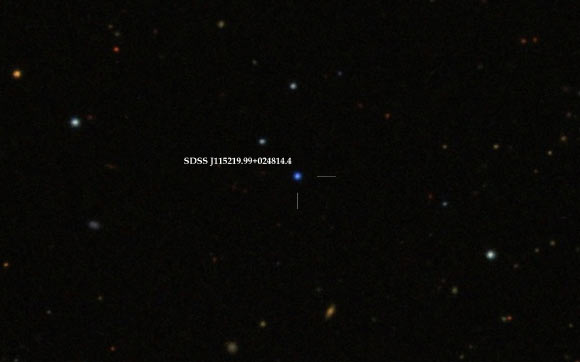Astronomers Discover First Pulsating White Dwarf in Eclipsing Binary System | Astronomy – Sci-News.com
Astronomers have spotted a pulsating white dwarf star in the binary stellar system SDSS J115219.99+024814.4 (SDSS J1152+0248 for short).
White dwarfs are the burnt-out cores of Sun-like stars and are the fate of 97% of the stars in our Milky Way Galaxy.
The internal structure and composition of white dwarfs are hidden by their high gravities, which causes all elements apart from the lightest ones to settle out of their atmospheres.
Most white dwarfs are thought to be made primarily of carbon and oxygen, but the white dwarf in the SDSS J1152+0248, a 2.4-h binary system consisting of two low-mass white dwarfs discovered using data from NASA’s Kepler/K2 mission, is made mostly of helium.
“We think this is a result of its binary companion cutting off its evolution early, before it got a chance to fuse the helium into carbon and oxygen,” said University of Sheffield’s Professor Vik Dhillon and colleagues.
The astronomers observed SDSS J1152+0248 using HiPERCAM, a revolutionary high-speed camera that can take one picture every millisecond simultaneously in five different colors and is mounted on the 10.4-m Gran Telescopio Canarias on the island of La Palma in the Canary Islands, Spain.
This allowed the researchers to detect the rapid and subtle pulsations from one member of the system.
The pulsations of this 0.325-solar-mass white dwarf and the eclipsing binary system allowed the team to investigate the structure of it using two techniques, asteroseismology and eclipse studies. Asteroseismology involves measuring how fast sound waves travel through the white dwarf.

This image shows the SDSS J115219.99+024814.4 binary system. Image credit: Centre de Données astronomiques de Strasbourg / SIMBAD / DSS.
“Determining what a white dwarf is made of is not straightforward because these objects have about half of the mass of the Sun, packed into something about the size of the Earth,” said first author Dr. Steven Parsons, also from the University of Sheffield.
“This means that gravity is extremely strong on a white dwarf, around one million times larger than here on Earth, so on the surface of a white dwarf an average person would weigh about 60,000,000 kg.”
“The gravity causes all of the heavy elements in the white dwarf to sink to the centre, leaving only the lightest elements at the surface and so the true composition of it remains hidden underneath.”
“This pulsating white dwarf we discovered is extremely important since we can use the binary motion and the eclipse to independently measure the mass and radius of this white dwarf, which helps us determine what it is made of,” he said.
“Even more interestingly, the two stars in this binary system have interacted with each other in the past, transferring material back and forth between them.”
“We can see how this binary evolution has affected the internal structure of the white dwarf, something that we’ve not been able to do before for these kinds of binary systems.”
The discovery is reported in a paper in the journal Nature Astronomy.
_____
S.G. Parsons et al. A pulsating white dwarf in an eclipsing binary. Nat Astron, published online March 16, 2020; doi: 10.1038/s41550-020-1037-z





